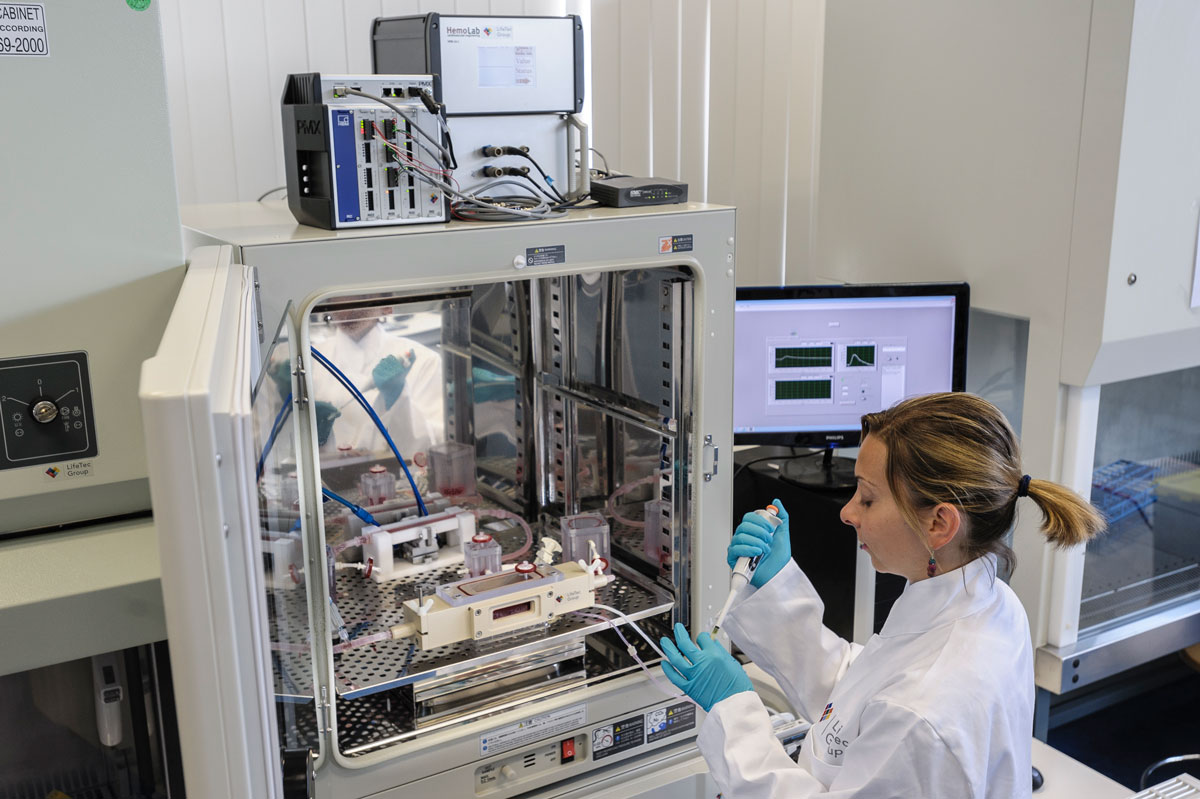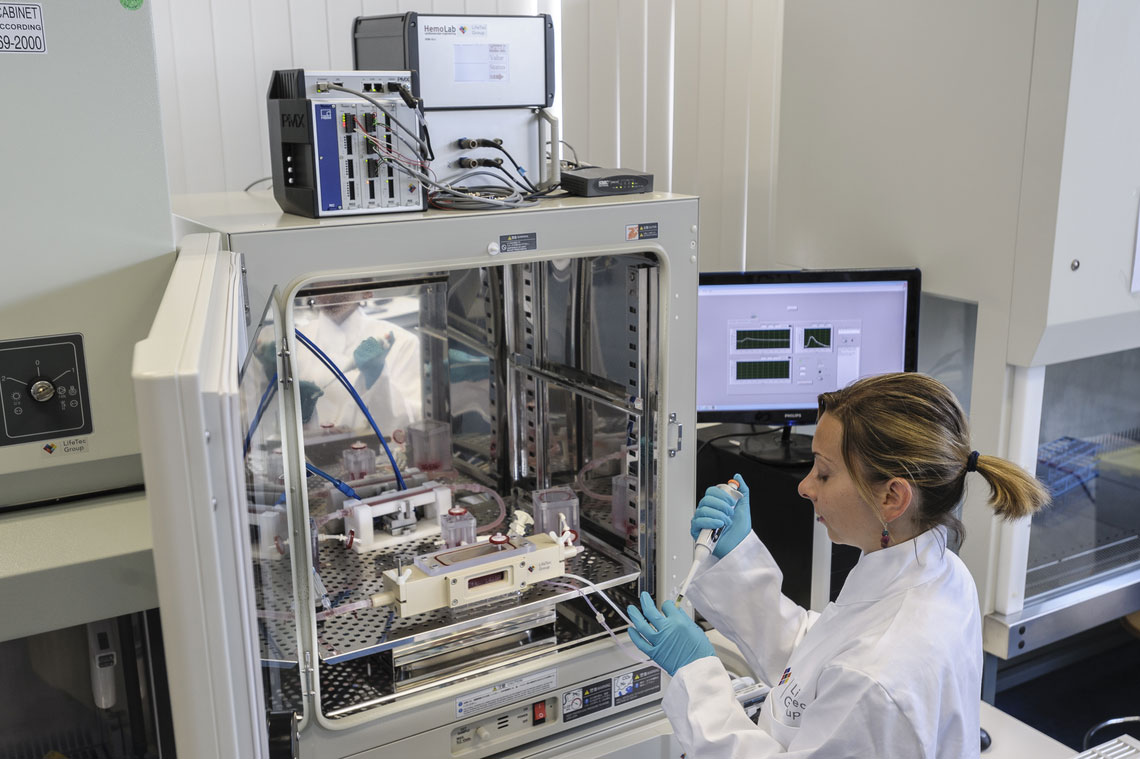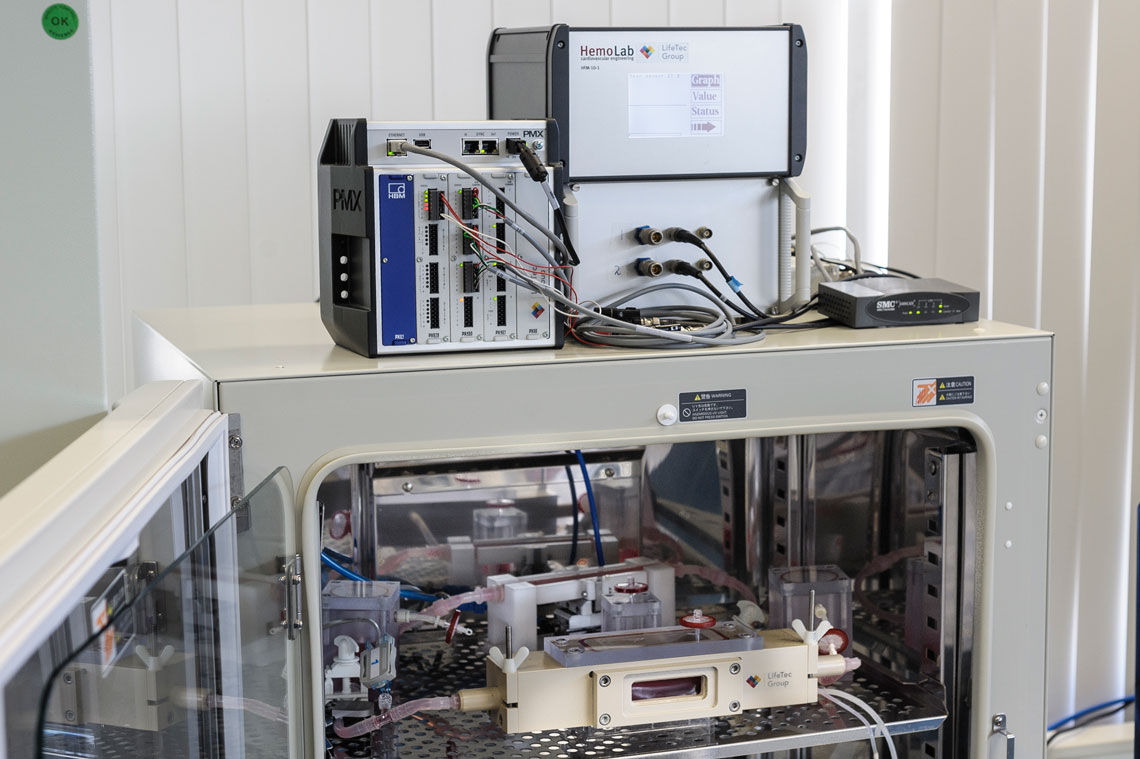LifeTec in Eindhoven specializes in independent contract-based research for businesses and institutions that introduce medical devices, implants, surgical instruments or new medical techniques onto the market. The research involves testing and evaluating the functionalities of the devices, often under highly realistic conditions. For acquisition and processing of all of the critical test data, LifeTec purchased the PMX measurement amplifier platform by HBM.
“The idea for LifeTec came about at the faculty of Biomedical Technology at the Eindhoven University of Technology. It appeared that the business community was regularly posing research questions to the university, but no one was doing anything with them. The reasons for this were lack of capacity, lack of publications, or the issue was not ‘scientific’ enough for students,” begins Marco Stijnen, Cardiovascular Group Manager at LifeTec Group. “A predecessor to today's LifeTec was set up at that time. It was a group for researchers with an academic background dedicated to projects and applications for industry.
LifeTec's first project was a study on the functioning of a new type of heart valve, which lasted one year. We are currently conducting subsidized research projects under contract from clients such as the Netherlands Institute for Science and Technology (the "STW") and we perform contract-based research for businesses seeking to introduce new medical devices or techniques. A considerable portion of our work involves the testing of cardiovascular and orthopedic devices, for which we have developed our own methods. In addition to this, we also have access to a wide array of scientific expertise on campus, as well as equipment such as electron microscopes and micro and nano CT scanners.


